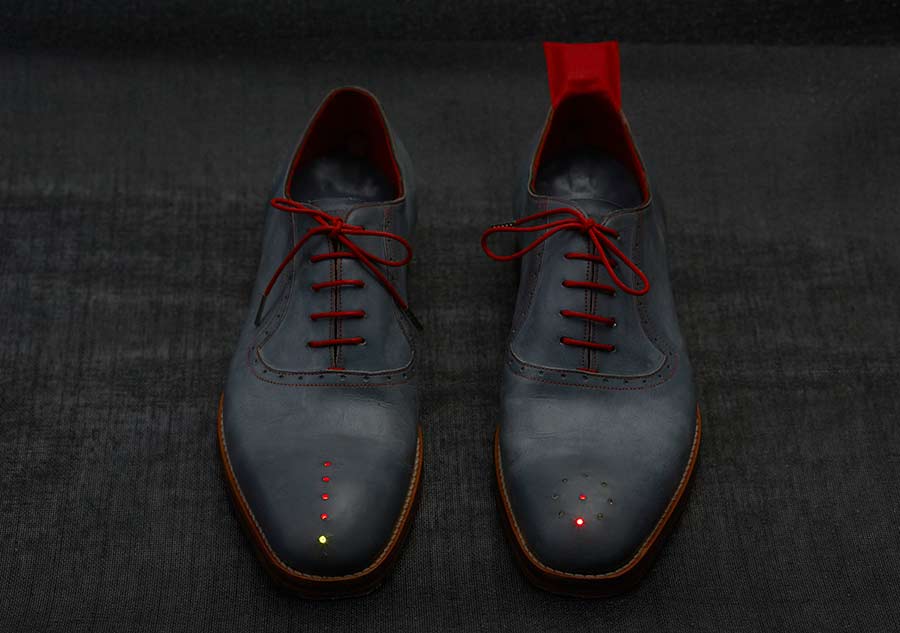Robert McGrath's blog
Personalized Word Clock
Wed, 10/15/2014 - 07:53 — Robert McGrathAnother cool idea from Instructables--arduino clock, with personalized messages.
Great for a personalized present....
http://www.instructables.com/id/Personalised-Word-Clock/

Plans for 3D printed Quad copter
Sun, 10/12/2014 - 09:24 — Robert McGrathPossibly of interest, complete plans and instructions for " 3D Printed Quadcopter with Arduino" from Instructables.
It looks like this could be done pretty simply in the CUCFL.

Cool Project: ROBOPuppet
Sun, 10/05/2014 - 10:43 — Robert McGrathPossibly of interest: very cool robot programming methodology--use 3D printer plus arduino to make hand held model. Teach the model, then push to the real robot.
ROBOPuppet from Indiana U. Really cool!
See the web site and conference paper for details.
Anna Eilering, Giulia Franchi and Kris Hauser, “ROBOPuppet: Low-Cost, 3D Printed Miniatures for Teleoperating Full-Size Robots,” IEEE/RSJ Intl. Conference on Intelligent Robots and Systems (IROS), September 2014.
Instructables Project: Cool Desk Idea
Fri, 09/19/2014 - 08:31 — Robert McGrathA cool project from Instructables: the Hanster Wheel Desk

If I had one of these, I'd want to collect data on activity (pretty easy), and use it in apps. E.g., to track activity, reinforce positive behaviors, and meter on-line activities (e.g., walk a mile to earn 30 minutes of minecraft....)
3D Pen Constuct
Tue, 09/16/2014 - 08:47 — Robert McGrathFrom Hong Kong, a "lace" dress, constructed with a "3D Pen".
This has got to be the hard way to make a dress, and I'd be surprised if it was especially comfortable to wear. (Soon, we'll have the option to print much nicer materials, I'm sure.)
Not Exact Ruby, Nor Slippers, But…
Sun, 08/31/2014 - 16:08 — Robert McGrathAn interesting art work/gadget from Dominic Wilcox: “GPS Shoes“.
These shoes can be programmed to give directions, and though scarcely ruby slippers, but they may be able to take you home.
Best of all, the feature is enabled by clicking your heals, a la Dorothy. Cool!

By the way, Wilcox has a lot of other strange and interesting “inventions” in his portfolio.
Possibly of interest: Walk-In Origami Klaediscope!!!
Thu, 07/24/2014 - 08:51 — Robert McGrathAn awesome walk-in kaleidoscope!
From Kobe (I needed to translate the blog page), this is built as a giant origami, made of folded mirrors, inside a shipping container. The folds are fabricated by laser cutting perforations into mirrors.
(I don't think the Epilog has sufficient power to replicate this, but I'm not sure.)
Google translate says "awesome" translates to: 素晴らしい
UIUC Bio Bots
Thu, 07/10/2014 - 10:27 — Robert McGrathYet more awesomeness out of UIUC Bioengineering. Tiny Robots! Powered by muscle tissue!
Fabbers will be interested that the structures were made using 3D printing techniques, to print out "hydrogel".
See the paper for details.
Well done, all.
Publication:
C. Cvetkovic*, R. Raman*, V. Chan, B. J. Williams, M. Tolish, P. Bajaj, M. L. Sakar, H. H. Asada, M. T. A. Saif, R. Bashir, "Three-dimensionally printed biological machines powered by skeletal muscle" PNAS, 2014. DOI: 10.1073/pnas.1401577111. - (download PDF)
Possibly of Interest: 3D Printing and Art Works
Thu, 07/10/2014 - 10:22 — Robert McGrathA piece last week aggregated some recent art works that use 3D printing. These projects may be inspirational for Fabbers.
14 Ways 3D Printing Has Changed The Art World by Katherine Brook.
Possibly of interest: Autodesk Labs Bio/Nano/Programmable Group
Mon, 06/30/2014 - 09:43 — Robert McGrathPossibly of interest: Autodesk Labs is investigating 4D printing among other things
http://www.autodeskresearch.com/groups/nano
Wild and crazy stuff and totally for real.
(And I'm glad to see software people deeply involved: it'll never fly until there are good tools to do it.)
Ink jet printed RAM on paper
Thu, 06/19/2014 - 16:02 — Robert McGrathPrintable circuit fans: IEEE Spectrum reports on progress--non volatile RAM printed on paper!
The report by Rachel Courtland has pointers to details and some background information.
Really cool!
x.pose: Provocative "Wearable Sculpture" from NYU
Sun, 06/15/2014 - 11:38 — Robert McGrathAn interesting 'wearable scupture' from NYU graduate project. This uses technology familiar to Fabbers, and could be recreated in the CUCFL: 3D printing, smart fabric, an arduino, and data feeds from mobile devices were employed to create a provocative garment that amplifies the wearer's "exposure":
as she eimits metadata that reveals her personal activities, the garmet becomes transparent to reveal more of her personal person.
See also:
X.pose by Xuedi Chen and Pedro G.C. Oliveira
"Description
Dancing with Drones
Thu, 05/29/2014 - 10:12 — Robert McGrathDrone fans: here's a remarkable performance. Really cool.
elevenplay dance performance with drones at Spiral Hall
In the current location, CUCFL has all the ingredients to create such a performance, incuding dancers.
Mink - print your own makeup
Fri, 05/09/2014 - 08:34 — Robert McGrathYet another kind of "printing"--print your own makeup.
From the presentation, this seems to be pretty far along toward reality.
One thing that is interesting is that they will have to solve the problem of supplying the input materials (which in this case are strictly regulated by the FDA, for good measure).
If successful, this could be a paradigm example that inspires print-it-yourself consumer goods.
Instructables Project: Atomic Force Microscope (?!)
Tue, 04/29/2014 - 08:56 — Robert McGrathOK, here's something I've always wanted, but never could have: an atomic force microscope! What would I do with it? Who knows? It's been academic, anyway, up to now.
Instructables has posted a low cost project for a DIY ATM. Wow!
Any Fabbers interested in such a project?
